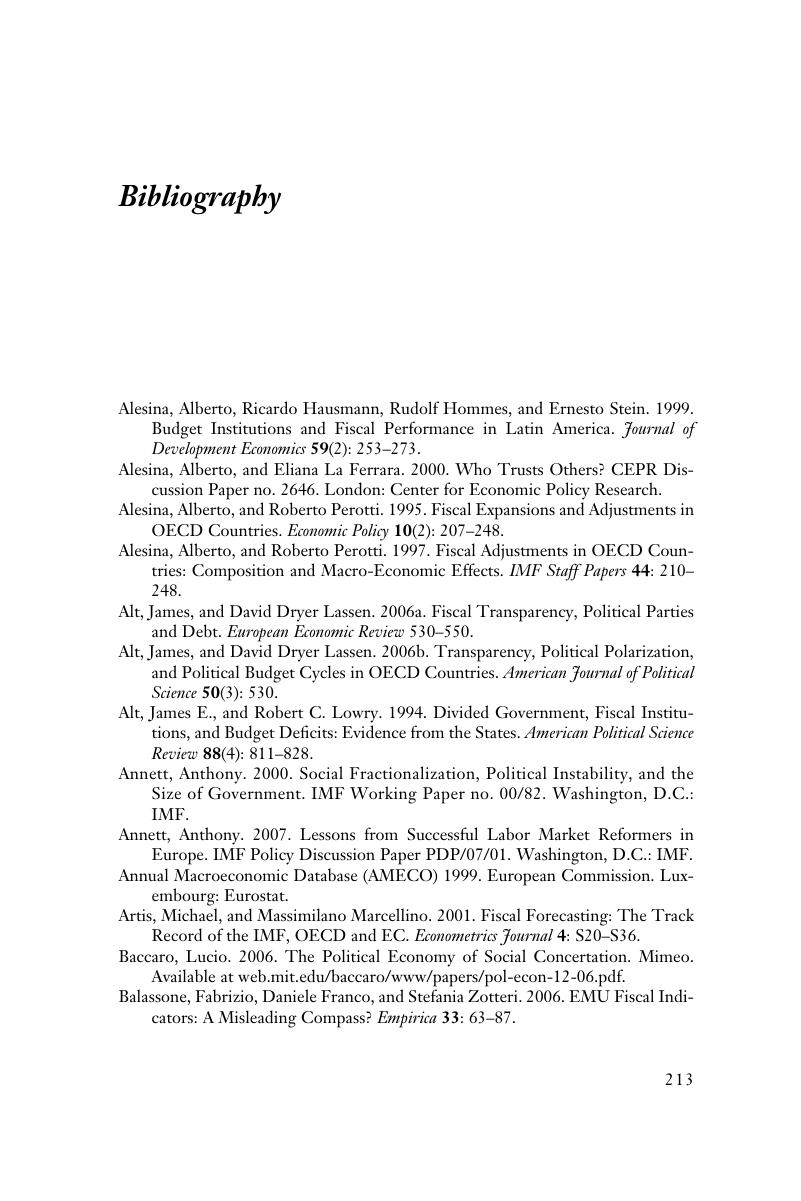Book contents
- Frontmatter
- Contents
- Acknowledgments
- 1 INTRODUCTION
- 2 ELECTORAL AND FISCAL INSTITUTIONS AND FORMS OF FISCAL GOVERNANCE
- 3 AN ACCOUNT OF FISCAL NORMS AND RULES IN THE EUROPEAN UNION FROM 1985 TO 2004
- 4 HOW FORMS OF FISCAL GOVERNANCE AFFECT FISCAL PERFORMANCE
- 5 WHY DO COUNTRIES HAVE DIFFERENT FISCAL INSTITUTIONS?
- 6 INSTITUTIONAL CHOICE IN NEW DEMOCRACIES: FISCAL GOVERNANCE IN CENTRAL AND EAST EUROPEAN COUNTRIES
- 7 EMU AND FISCAL GOVERNANCE IN EUROPE
- 8 CONCLUSION
- Bibliography
- Index
- Cambridge Studies in Comparative Politics
- References
Bibliography
Published online by Cambridge University Press: 04 August 2010
- Frontmatter
- Contents
- Acknowledgments
- 1 INTRODUCTION
- 2 ELECTORAL AND FISCAL INSTITUTIONS AND FORMS OF FISCAL GOVERNANCE
- 3 AN ACCOUNT OF FISCAL NORMS AND RULES IN THE EUROPEAN UNION FROM 1985 TO 2004
- 4 HOW FORMS OF FISCAL GOVERNANCE AFFECT FISCAL PERFORMANCE
- 5 WHY DO COUNTRIES HAVE DIFFERENT FISCAL INSTITUTIONS?
- 6 INSTITUTIONAL CHOICE IN NEW DEMOCRACIES: FISCAL GOVERNANCE IN CENTRAL AND EAST EUROPEAN COUNTRIES
- 7 EMU AND FISCAL GOVERNANCE IN EUROPE
- 8 CONCLUSION
- Bibliography
- Index
- Cambridge Studies in Comparative Politics
- References
Summary

- Type
- Chapter
- Information
- Fiscal Governance in Europe , pp. 213 - 226Publisher: Cambridge University PressPrint publication year: 2009
References
- 1
- Cited by

